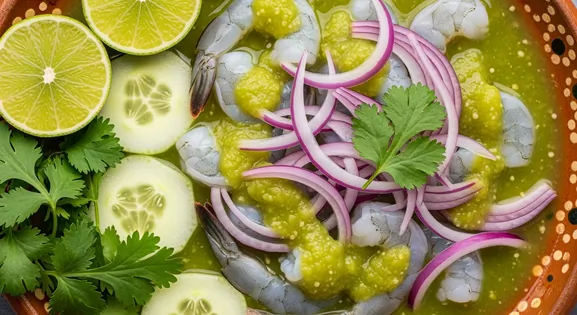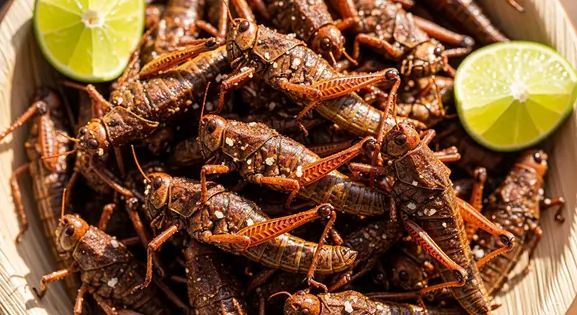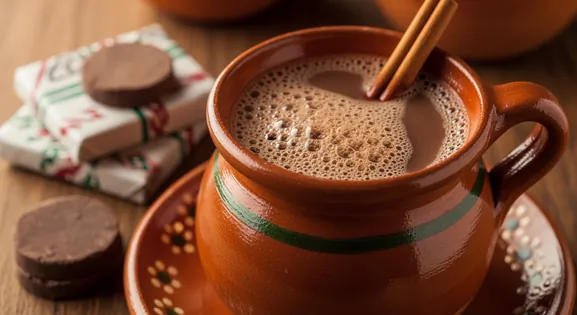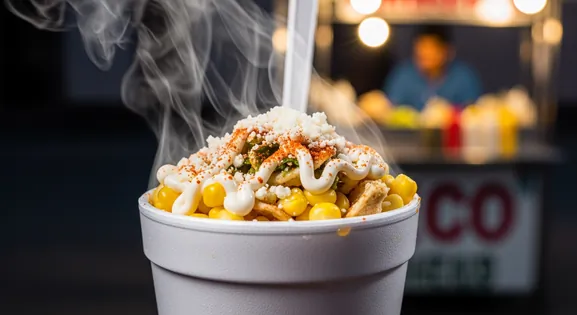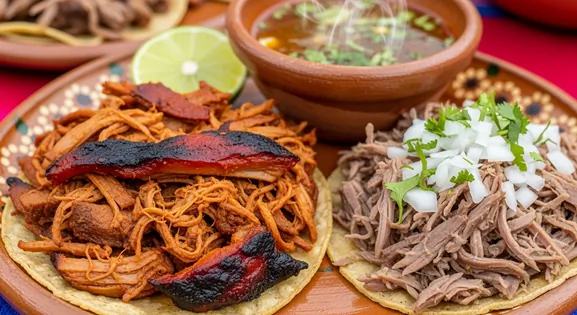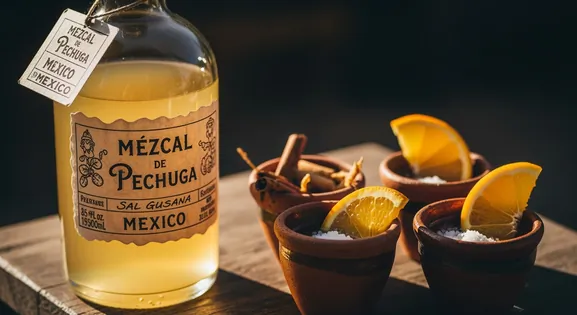Chiles en Nogada in Mexico: A Complete Food Lover's Guide
Chiles en Nogada
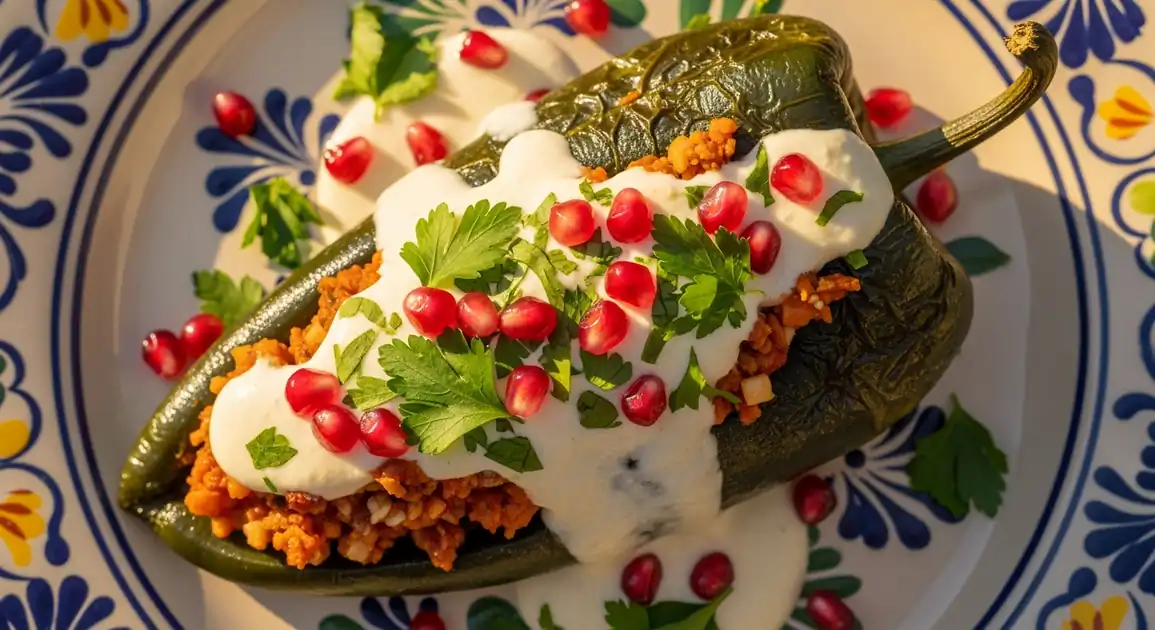
What is Chiles en Nogada?
Chiles en Nogada is an iconic Mexican dish embodying the colors of the Mexican flag: a green poblano chile stuffed with a sweet-savory picadillo (mixture of meat, fruits, and spices), covered with white nogada sauce made from walnuts, and garnished with red pomegranate seeds and parsley. Created in Puebla to honor Mexican independence, this seasonal delicacy combines complex flavors and textures - sweet, savory, creamy, and crunchy all in one bite.
Universal Quality Indicators
What to Look For
-
Established restaurants with good reputation for traditional cuisine
Opt for reputable restaurants known for traditional Mexican fare, as they typically adhere to higher standards for ingredient freshness and preparation of complex dishes like this.
-
Properly chilled nogada sauce
The dairy-based walnut sauce must be kept refrigerated. Look for a fresh, white appearance and a thick, creamy consistency, indicating proper handling.
-
Seasonal availability (July-September)
Restaurants serving it only during the traditional season likely use fresh, seasonal ingredients rather than frozen or preserved components.
-
Fresh, vibrant garnishes
Bright red pomegranate seeds and fresh green parsley indicate attention to quality and freshness.
What to avoid
-
Year-round availability at casual establishments
This seasonal dish relies on fresh ingredients. Avoid places offering it year-round, as they may use frozen components or shortcuts impacting quality.
-
Pre-made or day-old appearance
Look for signs like dried-out sauce, soggy chile, or discolored filling. The dish should look freshly assembled.
-
Extremely low prices
Given the labor-intensive preparation and quality ingredients required, unusually cheap Chiles en Nogada might indicate corners being cut.
-
Grayish or yellowish walnut sauce
Discoloration in the sauce indicates oxidation, improper storage, or old walnuts, potentially affecting both taste and safety.
How to Order Chiles en Nogada
Perfect Partners: What to Pair
Mexican White Wine
wine
A crisp, dry Mexican white wine, such as a Chenin Blanc or Sauvignon Blanc, can cut through the richness of the nogada sauce and complement the fruitiness of the picadillo, enhancing the overall dining experience.
Agua Fresca
non-alcoholic beverage
A refreshing, non-alcoholic option like horchata (rice milk drink) or jamaica (hibiscus tea) provides a sweet and cooling contrast to the complex flavors of the dish, especially if you prefer a lighter accompaniment.
Explore Chiles en Nogada in Detail: City Guides
Discover where to find the best Chiles en Nogada and learn local tips in these cities:
The Culinary Legend of Chiles en Nogada
Chiles en Nogada was reportedly created in 1821 by Augustinian nuns at the Santa Monica convent in Puebla to honor Mexican independence hero Agustín de Iturbide when he visited the city after signing the Treaty of Córdoba. The nuns crafted a dish featuring the colors of the Mexican flag (green, white, and red), using seasonal ingredients available in August-September. The dish has since become a symbol of Mexican culinary heritage and patriotism, traditionally consumed during the independence celebrations in September.
Deconstructing Chiles en Nogada: Ingredients and Method
The preparation is complex and time-consuming. Fresh poblano chiles are charred, peeled, and carefully deseeded while keeping their shape intact. The picadillo filling combines ground meat (traditionally pork) with seasonal fruits (apple, pear, peach), spices, and sometimes nuts or raisins. The nogada sauce requires peeling fresh walnuts (an arduous task) before grinding them with cream, cheese, and a touch of sugar. The dish is assembled by stuffing the chiles with picadillo, covering them with the walnut sauce, and garnishing with pomegranate seeds and parsley. Traditionally served at room temperature or slightly chilled.
Key Ingredients of Chiles en Nogada
Poblano Chiles
The mild, dark green chiles that form the base of the dish. They should be fresh, firm, and perfectly roasted to remove the skin while retaining their shape for stuffing.
Quality indicator: Look for chiles that are uniformly green, firm to the touch, and free of blemishes.
Picadillo
The savory-sweet filling, traditionally made with ground pork or beef, mixed with seasonal fruits like apple, pear, and peach, plus aromatic spices. A well-balanced picadillo is crucial for flavor.
Quality indicator: The filling should be moist but not watery, with distinct pieces of fruit and meat, not a homogenous paste.
Nogada Sauce
A creamy, rich sauce made from fresh, peeled walnuts, goat cheese, milk or cream, and a touch of sugar. It should be smooth, white, and have a distinct, fresh nutty flavor.
Quality indicator: The sauce should be bright white, thick, and creamy, without any grayish or yellowish discoloration, indicating fresh walnuts and proper handling.
Local Chiles en Nogada Variations in Mexico
Traditional Chiles en Nogada
The classic version using pork and/or beef picadillo with a mixture of seasonal fruits (apple, pear, peach), spices, and walnut-cream sauce. Served at room temperature with pomegranate seeds and parsley.
Vegetarian Chiles en Nogada
Replaces meat with mushrooms, textured vegetable protein, or additional fruits and nuts while maintaining the traditional flavor profile.
Vegan Chiles en Nogada
Uses plant-based ingredients for both the filling and the nogada sauce, often substituting cashew or almond cream for the dairy components.
Battered Chiles en Nogada
A less common variation where the stuffed chile is dipped in egg batter and fried before adding the nogada sauce and garnishes.
Modern/Fusion Chiles en Nogada
Contemporary chefs' interpretations that might include non-traditional ingredients or presentation styles while respecting the essential elements of the dish.
Dietary Information
Dietary Information
Important Note for Travelers: Your safety is our priority. Below are the common allergens associated with the traditional preparation of this dish. However, recipes and ingredients can vary significantly between establishments. Always confirm all ingredients directly with the food vendor before ordering, especially if you have a severe allergy.
Potential Allergens
Dietary Suitability
Frequently Asked Questions about Chiles en Nogada
What is Chiles en Nogada?
Chiles en Nogada is an iconic Mexican dish featuring poblano chiles stuffed with a sweet and savory picadillo (meat, fruits, spices), topped with a white walnut-based cream sauce (nogada), and garnished with red pomegranate seeds and green parsley. These three colors symbolize the Mexican flag, making it a patriotic dish often enjoyed around Independence Day. It offers a unique blend of sweet, savory, and nutty flavors.
When is the best time to eat Chiles en Nogada in Mexico?
The prime season is July through September, peaking in August and early September, leading up to Mexican Independence Day (September 16). This timing aligns with the pomegranate and walnut harvest. Most restaurants offer it only during this period when ingredients are freshest. For the most authentic experience, aim for late August to mid-September.
How can I ensure quality when eating Chiles en Nogada?
Chiles en Nogada is generally a quality choice when prepared well. Given the thorough cooking of the chiles and filling, and fresh sauce, focus on ingredient freshness and proper refrigeration of the walnut sauce. Opt for established restaurants over casual street stalls, as this dish requires careful preparation. The dairy-based nogada sauce should be properly chilled, making reputable establishments your best option for quality.
How spicy are Chiles en Nogada?
Despite using poblano chiles, Chiles en Nogada is typically mild to medium in spiciness. Poblanos are milder Mexican chiles, and roasting further reduces their heat. The creamy walnut sauce also balances any spiciness. The dish is primarily known for its complex sweetness, nuttiness, and savory qualities, not for intense heat. If sensitive to spice, you can inquire if seeds and veins are thoroughly removed.
Is Chiles en Nogada vegetarian or vegan?
Traditional Chiles en Nogada contains meat in the picadillo and dairy in the nogada sauce, making the classic version neither vegetarian nor vegan. However, many restaurants now offer vegetarian versions with plant-based picadillo. Vegan options are less common but available, often substituting plant-based cream for dairy in the sauce. Always confirm ingredients for dietary needs.
What makes a good Chiles en Nogada?
An excellent Chiles en Nogada uses fresh, in-season ingredients like ripe pomegranates and newly harvested walnuts. The poblano chile should be perfectly roasted and hold its shape. The picadillo needs a balanced sweet-savory profile. The nogada sauce must be creamy white and made from peeled walnuts. Vibrant garnishes and proper serving temperature (room temperature or slightly chilled) are also key.
Expert How-To Guides about Chiles en Nogada
How to Spot an Authentic Chiles en Nogada Restaurant
Learn how to identify reputable restaurants that serve authentic, high-quality Chiles en Nogada, ensuring a memorable and quality culinary experience.
- Look for places that only serve it during the traditional season (July-September).
- Check if the restaurant mentions using fresh, seasonal ingredients in their marketing.
- Authentic venues often display the story or history of the dish on their menu.
- The dish should always have all three colors of the Mexican flag (green chile/parsley, white sauce, red pomegranate).
- Quality restaurants will mention if they peel their walnuts by hand (labor intensive but traditional).
- The price reflects quality - good Chiles en Nogada isn't cheap due to labor and ingredient costs.
- Seek recommendations from knowledgeable locals or trusted food guides.
How to Properly Eat Chiles en Nogada
Discover the traditional way to enjoy this complex and symbolic dish, ensuring maximum flavor appreciation and a truly authentic experience.
- Observe the dish first - appreciate the three colors representing the Mexican flag.
- Take a photo if desired (it's a photogenic dish!).
- Cut a small piece that includes all components: chile, filling, sauce, and pomegranate seeds.
- Each bite should combine all elements for the full flavor experience.
- The dish is typically served at room temperature or slightly chilled - this is intentional.
- Pair with a good Mexican white wine or a light red wine like Cabernet Franc.
- Take your time and eat slowly - this is a dish meant to be savored.
How to Ensure Your Chiles en Nogada Is Freshly Made
Tips to verify you're getting a freshly prepared dish rather than pre-made components.
- Ask if the nogada sauce is made fresh daily (it should be, as it doesn't keep well).
- The walnut sauce should be creamy white, not grayish or yellowish (signs of oxidation).
- Pomegranate seeds should be bright red and plump, not dried out or pale.
- The chile should hold its shape when cut but yield easily to your fork.
- There should be no excess water pooling on the plate (sign of poorly drained chiles).
- Ask if they roast and peel their chiles in-house.
- The filling should have distinct pieces of fruit and meat, not a homogenous paste.
Our Commitment to Quality
At Tasteplorers, our mission is to provide the most accurate and useful travel information in the world. To achieve this, all content on this site is created through our unique editorial framework. We utilize leading AI research tools, guided by our proprietary prompts, and a multi-stage validation process. This entire system is overseen by our editorial team to ensure everything we publish meets our high standards for accuracy, cultural nuance, and practical value for travelers.
Learn more about our Editorial Process and our Mission.
Explore regions
Europe
Discover Europe's diverse culinary landscape, from Mediterranean flavors to hearty Alpine fare. Learn to navigate markets, decode menus, and eat like a local.
Latin America & Caribbean
Discover the vibrant cuisines of Latin America & the Caribbean. Our expert guide covers everything from Mexican street food to Peruvian ceviche and market tips.
Oceania
Explore Oceania's diverse food scene. Learn about Polynesian earth ovens, Fijian feasts, and the vibrant café culture of Australia and New Zealand.
Southeast Asia
Explore Southeast Asia's diverse food cultures from Thailand to Vietnam. Get expert tips on navigating spice levels, choosing quality vendors, and understanding the rich traditions of the region.
